Monar Jonban: The Mystery of Iran's Shaking Minarets
If you ever find yourself in the city of Isfahan, Iran, you may come across a remarkable architectural wonder known as the “Monar Jonban, in Farsi منار جنبان” or the Shaking Minarets.
This unique and intriguing structure has captivated visitors for centuries with its mysterious ability to make its minarets vibrate when one is shaken. The Monar Jonban represents not only the impressive engineering and architectural skills of its creators but also holds a symbolic significance in Iranian culture.
What secrets lie within the walls of Monar Jonban? How did the shaking minarets come to be? Join us on an exploration of the mysterious architectural marvel – the shaking minarets of Isfahan.
The Origins - A Tomb for a Sufi Ascetic (14th Century)
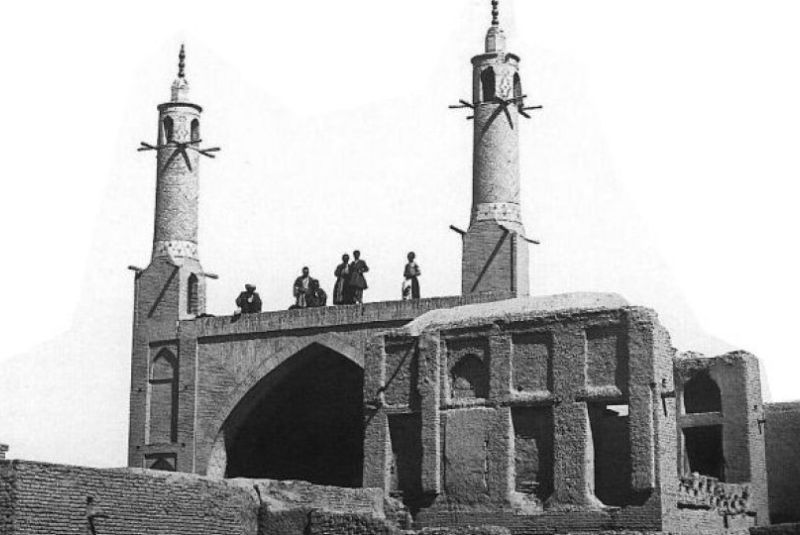
The story of Monar Jonban begins in the 14th century, during the reign of the Ilkhanate dynasty. It was during this period that a revered Sufi ascetic named Amu Abdullah Suqla established his hermitage near Isfahan. Known for his piety and devotion to Sufism, a mystical branch of Islam, he was deeply respected by the community. Following his passing, a simple tomb was constructed over his grave, marking the initial iteration of the present-day Monar Jonban. This humble structure served as a place of pilgrimage and remembrance for Sufis and local residents alike.
| Looking for a tour to Isfahan? Check out our Isfahan Tours
The Birth of the Shaking Minarets (16th-17th Centuries)
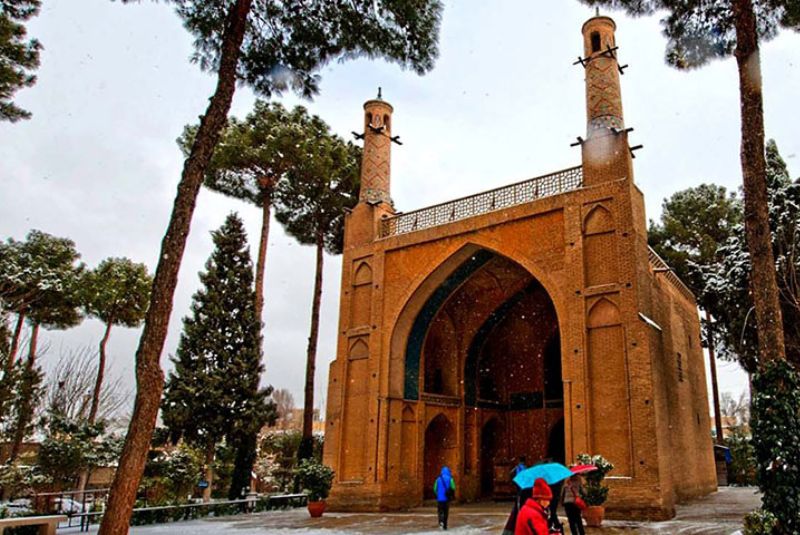
The monument underwent a significant transformation during the reign of the Safavid dynasty (1501-1736). This era witnessed a cultural and artistic flourishing, and the Monar Jonban was not excluded from this artistic zeal. Recognizing the potential of the tomb as a pilgrimage site, particularly for Shi'a Muslims whom the Safavids patronized, the dynasty embarked on renovations. The most striking addition was the construction of the iconic shaking minarets sometime between the 16th and 17th centuries. While the exact date remains unclear, historical records suggest they were built during this period. Bahāʾ al‐Dīn Muḥammad ibn Ḥusayn al‐ʿĀmilī, also known as Sheikh Baha'i, was the architect responsible for completing the Monar Jonban, specifically regarding the addition of the shaking minarets during the Safavid era.
| Related: Best Hotels in Isfahan to Stay
Why Monar Jonban was Constructed?
One popular theory suggests that the Shaking Minarets were built to serve as a form of seismic early warning system. In the earthquake-prone region of Iran, especially around Isfahan, architects and builders sought innovative ways to create structures that could withstand earthquakes or provide an alert before the onset of seismic activity. The vibrating minarets may have been designed to detect tremors and warn the local population.
Another theory suggests that the shaking feature was intentionally incorporated for entertainment purposes. It is said that the minarets were used to amuse visitors and demonstrate the skills of the architects and engineers who constructed them.
| Discover: Best Dishes in Isfahan You Must Try!
Architecture of Monar Jonban
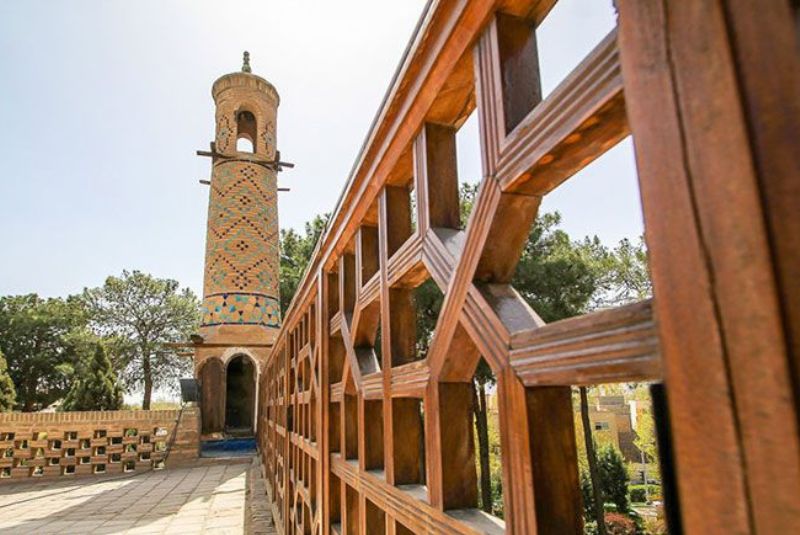
The architectural style of the Monar Jonban reflects the artistic trends prevalent during the Ilkhanate and Safavid periods. The tomb itself embodies elements of the "Mongolian style," characterized by its square plan, brickwork construction, and minimal ornamentation. In contrast, the minarets showcase influences from Timurid architecture, featuring fluted surfaces and turquoise tilework, adding a touch of elegance and grandeur to the monument.
The inscription, found on the tomb of Amu Abdullah Suqla, typically written in Arabic calligraphy, often details the deceased's life, accomplishments, and the date of their passing.
Monar Jonban's most distinctive feature is undoubtedly its twin shaking minarets. These minarets are characterized by a unique phenomenon – a gentle shaking motion that can be induced by manually pushing one minaret, causing the other to sway in tandem. The minarets' exteriors showcase intricate geometric patterns, a hallmark of Persian architecture in Islamic era.
| Read more: Top 5 Bridges in Isfahan over Zayanderud River
Why Monar Jonban is Shaking?
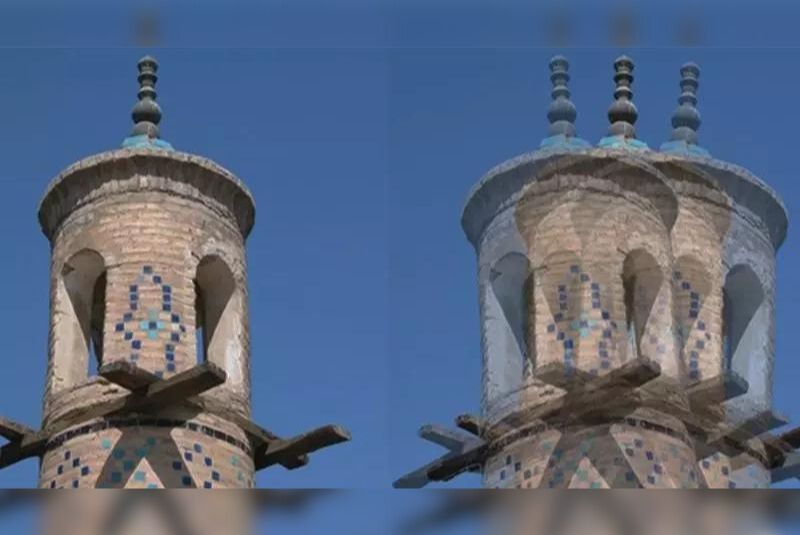
The engineering brilliance behind Monar Jonban's shaking minarets lies in their construction. The minarets are connected by a system of underground chambers and a wooden beam running through their cores. This clever design allows the vibrations initiated in one minaret to be transmitted to the other, creating the mesmerizing swaying effect. The specifics of this ingenious engineering have fascinated visitors and scholars alike for centuries.
Keep in mind that while the shaking feature was intentional, due to preservation efforts and concerns about the structural integrity of the minarets, access and shaking may be restricted or prohibited in modern times.
| Suggestion: Isfahan Historical Palaces
The Iwan
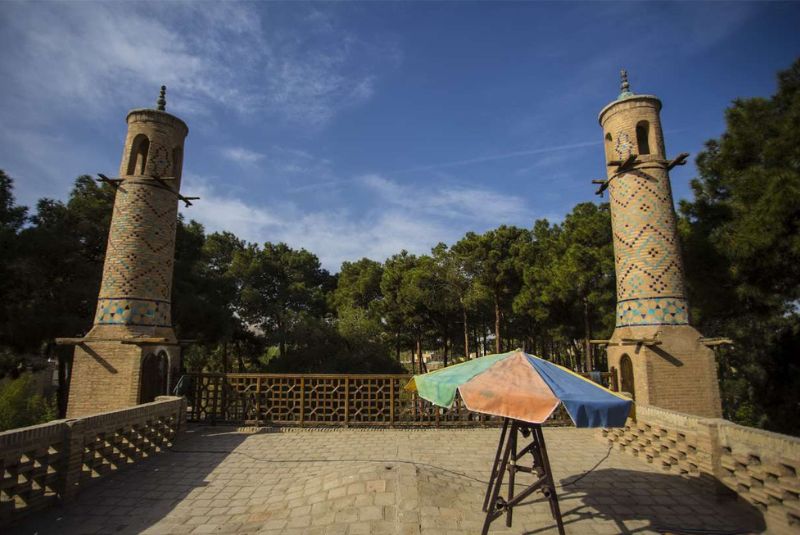
Standing tall at 10 meters above ground level, the iwan serves as a grand entranceway to the tomb chamber. Constructed using bricks, its interior features a domed ceiling adorned with tiles and paintings. This architectural element, prevalent in Islamic architecture, adds a sense of grandeur and visual interest to the complex.
Interestingly, several white tombstones scattered near the iwan hint at the presence of an ancient cemetery upon which the structure was built. These remnants serve as a subtle reminder of the historical significance and layered past of the location.
| Read more: Isfahan Mosques You Should Visit
The Chelleh-Khaneh
Tucked away within the complex are two small rooms known as Chelleh-Khaneh. These rooms hold historical significance, as they were traditionally used by sages and ascetics for 40-day spiritual retreats. During these periods of intense devotion and solitude, individuals would engage in rigorous spiritual practices, seeking a deeper connection with God. The presence of these dedicated spaces highlights the association of the Monar Jonban with Sufi practices and the pursuit of spiritual enlightenment.
Monar Jonban Location and Accessibility
The Monar Jonban resides in the Nasrabad district of Isfahan, Iran. It's situated south of the Zayandeh River and is readily accessible by various means of transportation. Visitors can easily reach the monument using their personal vehicles, readily available taxis, or popular online ride-hailing services.
| Related: Ghoortan Citadel | Desert Fortress of Legends
Entrance Fees and Opening Hours
The entrance fee for the Monar Jonban 2024 is about 500,000 Iranian rials (IRR) for foreign visitors. The monument is open to the public from 9:00 AM to 4:30 PM, six days a week, with closures on Fridays.
Nearby Attractions
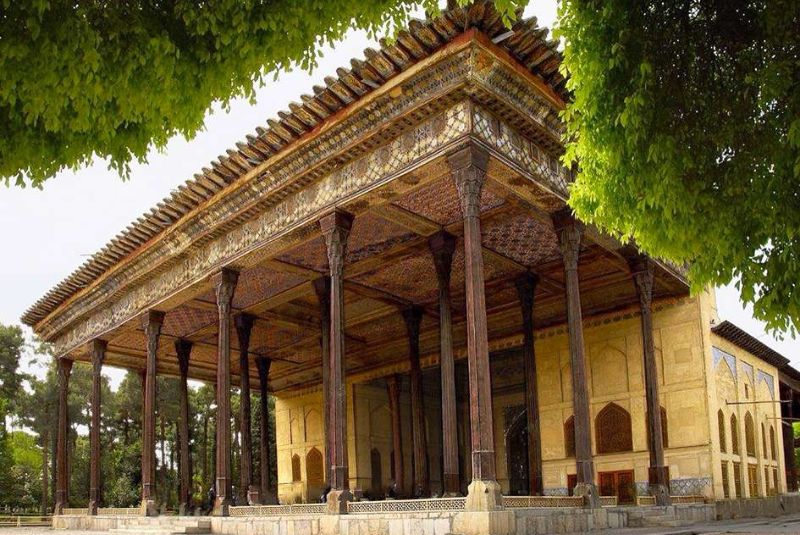
While visiting Monar Jonban in Isfahan, you may also want to explore other nearby attractions in Isfahan. Here are some suggestions:
- Naqsh-e Jahan Square: This UNESCO World Heritage Site is one of the largest city squares in the world and is surrounded by important historical buildings, including the Shah Mosque, Sheikh Lotfollah Mosque, and Ali Qapu Palace.
- Shah Mosque (Masjed-e Shah): Located on the south side of Naqsh-e Jahan Square, this stunning mosque is a masterpiece of Persian architecture. The intricate tilework and beautiful calligraphy make it a must-visit site.
- Sheikh Lotfollah Mosque: Situated on the eastern side of Naqsh-e Jahan Square, this mosque is known for its exquisite interior decoration, including delicate tilework and a unique dome.
- Ali Qapu Palace: This palace is located on the western side of Naqsh-e Jahan Square and served as the residence of the Safavid kings. It features a beautiful music hall and a terrace offering panoramic views of the square.
- Chehel Sotoun Palace: This palace, also known as the Forty Columns Palace, is set in a picturesque garden and features a hall with twenty wooden columns reflecting in a pool, creating the illusion of forty columns.
- Si-o-Se Pol (Bridge of 33 Arches): A historical bridge over the Zayandeh River, Si-o-Se Pol is known for its double-row of 33 arches and is a popular spot for locals and tourists alike.
- Khaju Bridge: Another beautiful bridge over the Zayandeh River, Khaju Bridge is known for its tilework, pavilions, and a delightful setting.
| Also read about: Vank Cathedral | Persian & Armenian Cultural Masterpiece
Nearby Markets and Shops

If you're interested in exploring markets and shops near Monar Jonban in Isfahan, you'll find a variety of options for traditional crafts, souvenirs, and local products. Here are some places to consider:
- Bazaar-e Bozorg (Grand Bazaar): Isfahan's Grand Bazaar is one of the oldest and most extensive bazaars in the Middle East. It is a labyrinth of covered streets and alleys where you can find a wide range of goods, including carpets, textiles, spices, handicrafts, and traditional Iranian sweets.
- Naqsh-e Jahan Square Bazaar: Surrounding Naqsh-e Jahan Square, this bazaar is known for its unique atmosphere and a variety of shops offering local handicrafts, carpets, jewelry, and souvenirs. It's a great place to explore while visiting the square and its surrounding monuments.
- Isfahan Carpets and Handicrafts Bazaar: For those interested in Persian carpets and handwoven textiles, this specialized bazaar offers a variety of high-quality rugs, textiles, and traditional handicrafts.
- Golshan Garden Bazaar: This market is located near the Chehel Sotoun Palace and offers a range of handicrafts, textiles, and local products in a serene garden setting.
- Qeysar Bagh Bazaar: Situated near Si-o-Se Pol, this bazaar is known for its antique shops and traditional crafts. It's a great place to explore after visiting the historic bridges.
- Khurshid Khan Market: This market is known for its jewelry shops, offering a selection of Persian-style jewelry, gemstones, and accessories.
| Read next: Takht-e Foulad
Local Cuisine and Dining Options
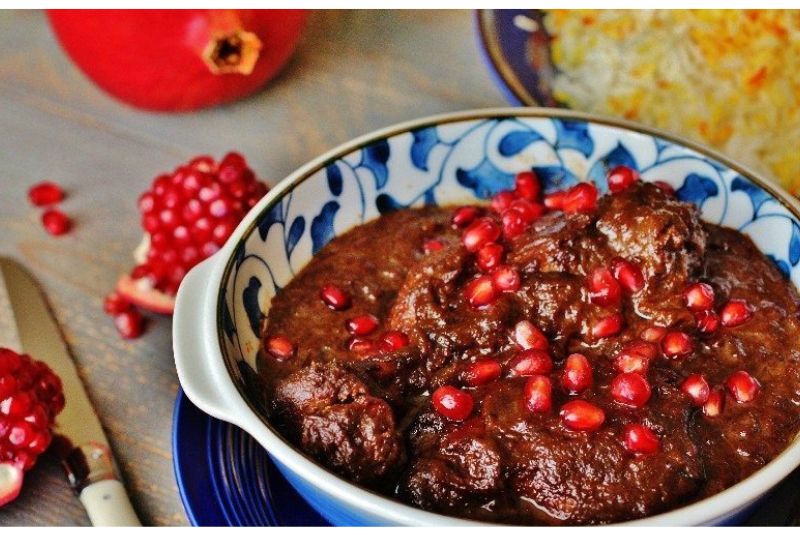
Isfahan is renowned for its delicious Persian cuisine, and you'll find a variety of local dishes to savor. Here are some traditional Iranian and Isfahani dishes, as well as recommended dining options in and around the city:
Traditional Dishes:
- Biryani Isfahani
- Khoresht-e Mast
- Zereshk Polo
- Fesenjan
- Gaz
- Khoresht-e Bademjan
- Chelo Kebab
| Related: Best Restaurants in Isfahan
Recommended Dining Options:
- Shahrzad Restaurant: Located near Naqsh-e Jahan Square, Shahrzad offers a traditional Iranian dining experience with a variety of Persian dishes.
- Azadegan Tea House: Situated in the Grand Bazaar, this tea house is a great place to relax and enjoy traditional Persian tea and snacks.
- Beryani Restaurant: Known for its Biryani Isfahani, this restaurant offers a cozy atmosphere and delicious local dishes.
- Haft Khan Restaurant: This restaurant is famous for its variety of traditional Iranian dishes and is set in a beautiful garden.
Final Takeaway
The Monar Jonban's captivating blend of history, architecture, and cultural significance makes it a must-visit for any traveler seeking a unique and enriching experience. So, add the Monar Jonban to your travel itinerary and discover the magic it holds.
Share your story!
Comment below and let us know about your Experience.
Your story inspires others!


Comment
Leave a Comment